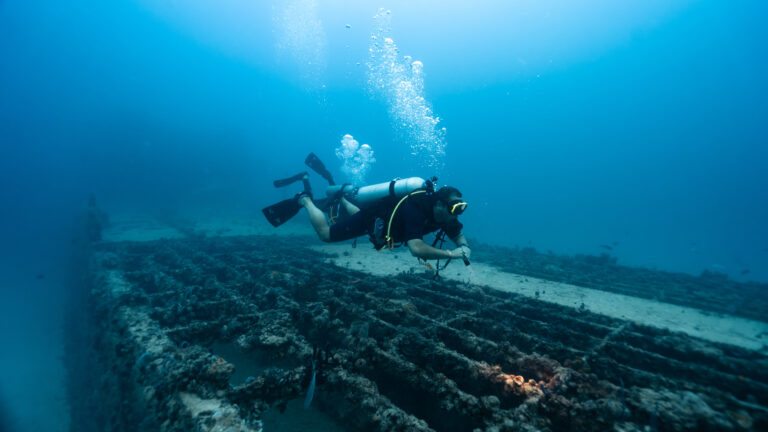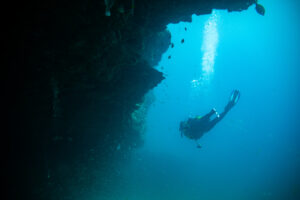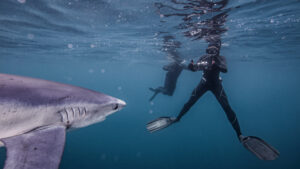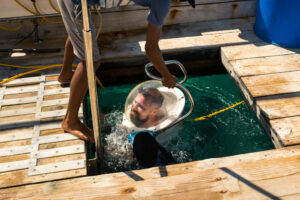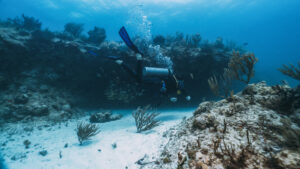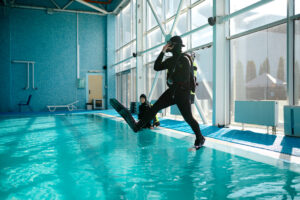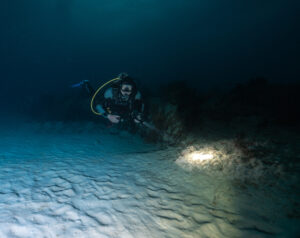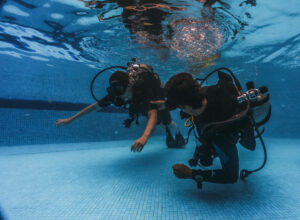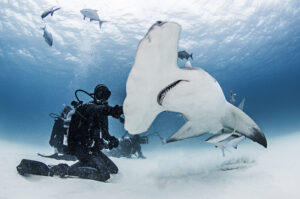What is Cyanosis?
Cyanosis refers to a bluish discoloration of the skin and mucous membranes caused by an insufficient level of oxygen in the blood. This condition can signal underlying health issues, particularly those related to respiratory and circulatory systems. In scuba diving, cyanosis is a critical indicator that a diver might be experiencing hypoxia, a dangerous reduction in oxygen levels. Recognizing and understanding cyanosis is vital for ensuring diver safety, as it can be a precursor to more severe conditions if not promptly addressed.
Understanding Cyanosis
Cyanosis manifests when the oxygen levels in the blood drop below a certain threshold, causing deoxygenated hemoglobin to accumulate. Hemoglobin is the protein in red blood cells responsible for transporting oxygen; when it lacks oxygen, it takes on a darker, bluish hue, which becomes visible through the skin and mucous membranes. There are two primary types of cyanosis: central and peripheral. Central cyanosis involves a general reduction in oxygenation throughout the body, often due to respiratory or cardiac conditions. Peripheral cyanosis, on the other hand, typically affects the extremities, such as fingers and toes, and can result from local circulation issues.
The underlying causes of cyanosis are varied and can include respiratory diseases like chronic obstructive pulmonary disease (COPD), cardiovascular conditions such as congenital heart defects, and environmental factors like high altitude. In scuba diving, cyanosis can occur due to specific triggers like decompression sickness, where nitrogen bubbles form in the blood due to rapid ascent, or hypothermia, where cold water constricts blood vessels and reduces oxygen delivery to tissues. Understanding these mechanisms is essential for divers and medical professionals to identify and mitigate risks associated with underwater activities.
Cyanosis in the Context of Scuba Diving
Scuba diving presents unique challenges that can contribute to the development of cyanosis. One of the primary factors is the breathing environment. Divers use compressed air, which behaves differently under pressure. As divers descend, the pressure increases, causing the partial pressure of oxygen to rise. This can lead to oxygen toxicity if not carefully managed, where excess oxygen can damage lung tissue and reduce effective oxygen transport, potentially leading to cyanosis.
Cold water immersion is another critical factor. Diving in cold environments can lead to hypothermia, which impairs the body’s ability to maintain core temperature and adequate circulation. As the body prioritizes warming the core, blood flow to the extremities is reduced, increasing the risk of peripheral cyanosis. Additionally, the cold can affect the diver’s ability to recognize and respond to symptoms, compounding the danger.
Decompression sickness (DCS) is perhaps the most notorious diving-related condition that can lead to cyanosis. When divers ascend too quickly, the rapid decrease in pressure can cause nitrogen, absorbed during the dive, to form bubbles in the blood and tissues. These bubbles can obstruct blood flow and cause severe circulatory and neurological symptoms, including cyanosis. Case studies have documented instances where divers, after a rapid ascent, exhibited blue discoloration along with other signs of DCS, highlighting the importance of adhering to safe ascent rates and decompression protocols.
Symptoms and Diagnosis
Recognizing cyanosis in a diving context requires vigilance and a good understanding of its signs. The most apparent symptom is the bluish discoloration of the skin, particularly in areas with rich capillary networks such as the lips, nail beds, and earlobes. Divers may also experience other symptoms like shortness of breath, dizziness, and fatigue, which are indicative of hypoxia and related conditions.
Diagnosing cyanosis underwater poses unique challenges. Divers and their buddies must rely on visual inspections and subjective assessments, which can be difficult in low-visibility conditions. Surface-based diagnostics are more straightforward, with tools like pulse oximetry providing objective measurements of blood oxygen saturation. A reading below 90% typically indicates hypoxia, and the presence of cyanosis can confirm this diagnosis. Post-dive medical evaluations are crucial, especially if a diver exhibits any signs of respiratory distress or unexplained fatigue, as these could indicate underlying conditions that require medical intervention.
The early detection of cyanosis is critical for ensuring prompt treatment and preventing more severe complications. Divers should be trained to recognize the early signs of cyanosis and understand the importance of immediate action. This includes signaling distress, initiating a controlled ascent, and seeking medical evaluation as soon as possible.
Prevention and Management
Preventing cyanosis in scuba diving starts with comprehensive dive planning and adherence to safety protocols. Divers should ensure they are well-acclimatized and physically prepared for the conditions they will encounter. This includes gradual acclimatization to cold water to reduce the risk of hypothermia and ensuring proper hydration and nutrition to maintain optimal physiological function.
Equipment checks are equally important. Divers must verify that their breathing apparatus is functioning correctly and that the oxygen levels in their tanks are appropriate for the planned depth and duration of the dive. Using dive computers and tables to monitor ascent rates and decompression stops is crucial in preventing decompression sickness, a major cause of cyanosis.
In the event of suspected cyanosis, immediate action is required. Divers should signal their condition to their buddy and begin a controlled ascent to the surface. Once on the surface, administering 100% oxygen can help alleviate symptoms by increasing the oxygen content in the blood. Divers should also be kept warm to counteract hypothermia and ensure proper circulation.
First aid training for diving emergencies is essential. Dive buddies and leaders should be proficient in recognizing and responding to cyanosis and related conditions. Emergency action plans should be in place, including access to hyperbaric chambers for treating severe decompression sickness. The role of the dive leader is critical in coordinating these efforts and ensuring that all divers are accounted for and safe.
Impact of Cyanosis on Long-Term Health
Repeated episodes of cyanosis can have significant long-term health implications. Chronic hypoxia can lead to persistent cardiovascular and respiratory issues, reducing a diver’s overall fitness and capacity to engage in strenuous activities. Divers who have experienced cyanosis should undergo thorough medical evaluations to assess any lasting damage and receive appropriate treatment.
Long-term monitoring is advisable for divers with a history of cyanosis. This can include regular check-ups with a dive medicine specialist and potentially modifying diving practices to reduce the risk of recurrence. Divers may need to avoid particularly challenging conditions or depths and adhere to more conservative dive profiles.
In some cases, divers might need to consider ceasing diving activities if the risks outweigh the benefits. The health and safety of the diver should always be the primary concern, and ongoing medical advice should guide decisions about continuing or modifying diving practices.
Key Takeaways
Understanding cyanosis is crucial for the safety and health of scuba divers. It serves as a warning sign of underlying issues that can lead to severe complications if not addressed promptly. Preventative measures, early recognition, and effective management are essential in mitigating the risks associated with cyanosis. Through proper training, equipment maintenance, and adherence to safety protocols, divers can minimize the occurrence of cyanosis and ensure a safe and enjoyable diving experience.

